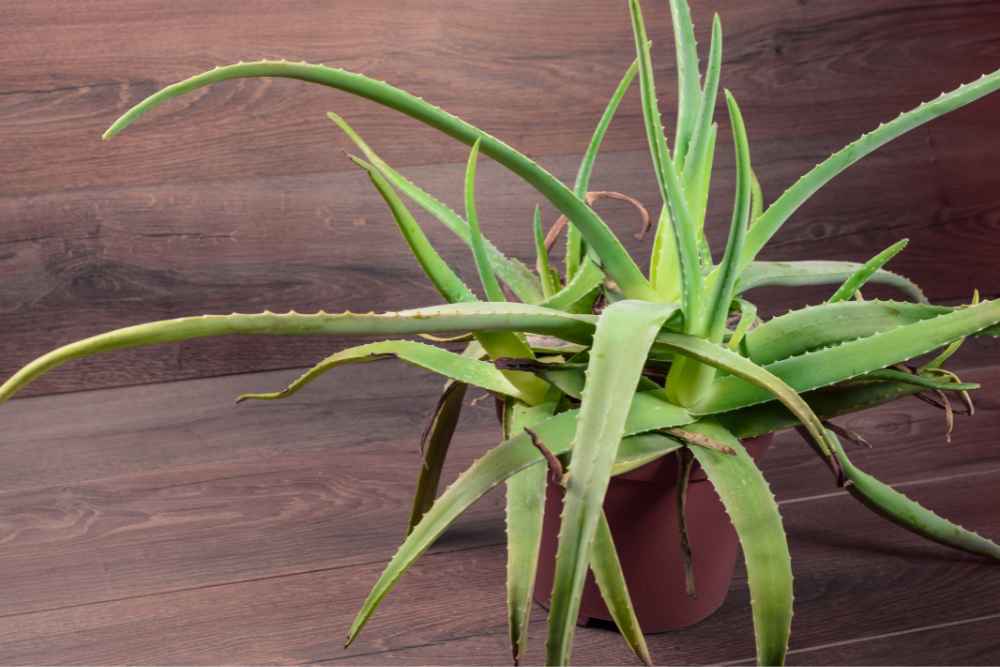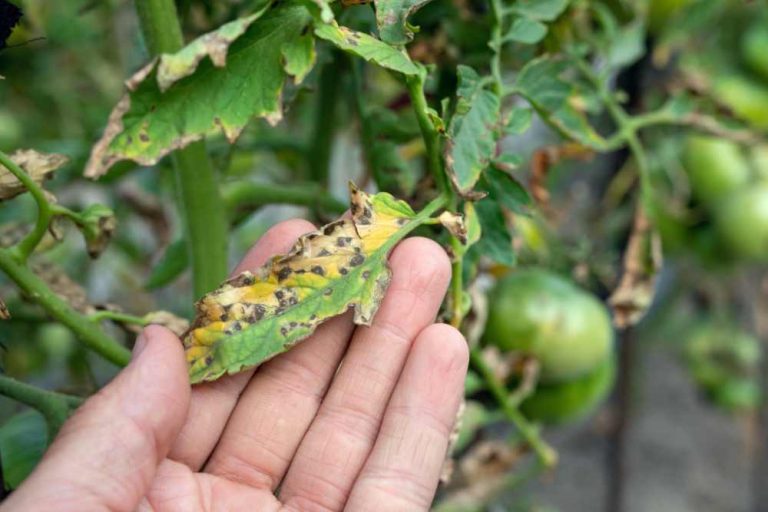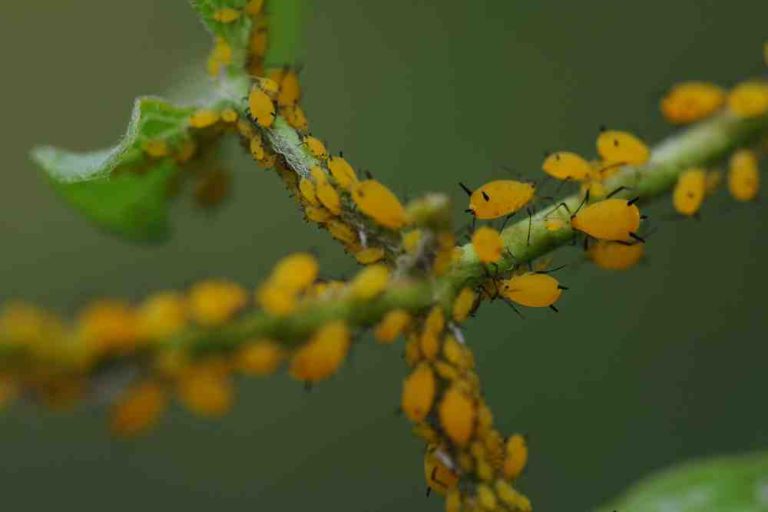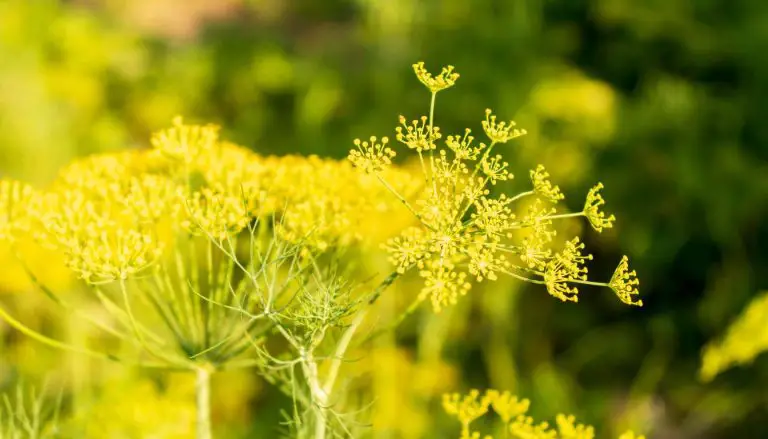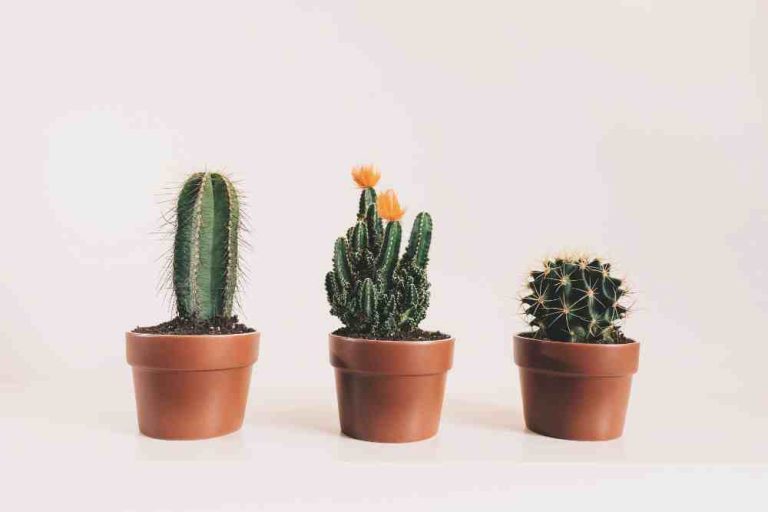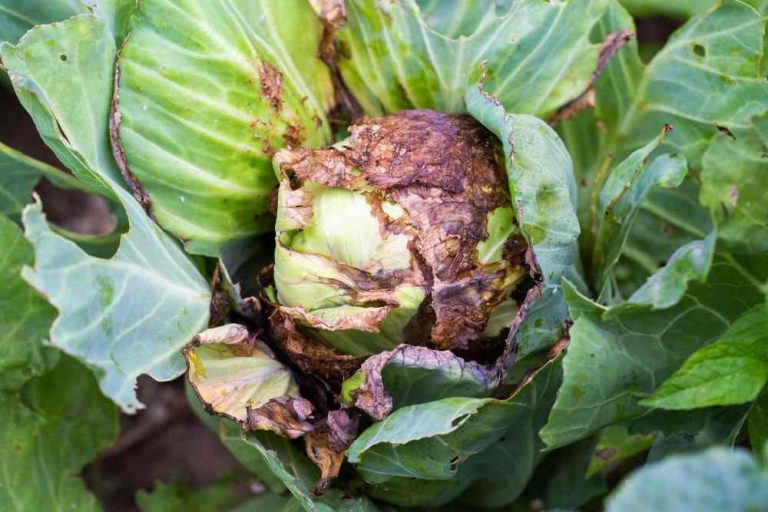Why Is My Aloe Turning Red? Common Causes and Solutions
One of the most well-known plants in the world is aloe vera. It is not surprising that people enjoy it because of its distinctive design, simplicity in maintenance, and maybe most importantly because of, its special healing abilities.
You might be wondering why your aloe vera plant has started to turn red. Some aloe plants have a slight pinkish or reddish-brown coloration. Similar problems lead to these two changes. A little investigation can assist you in determining the problem and, nearly usually, a solution.
Why is my Aloe turning red And How to fix it?
Shade is a favorite environment for aloe vera plants. Excessive sunshine, or a combination of too much sun and not enough water, causes an Aloe vera plant to turn red. Aloe leaves are sensitive and easily burned. They gradually turn crimson after starting as green. Returning the plant to the shade can undo the damage, but only if you do it quickly. If not, the leaves will droop and become brittle.
Following are a few typical causes of Redness
- Direct sunlight
- Insufficient acclimatization
- Incorrect watering
- Heavy soil
- Poor fertilization practices
- Transplanting shock
- Temperature swings and cold stress
- Excess salts
- Natural redness
The leaves will be primarily green in the winter with red edges and tips, but in the summer, with ideal lighting, the entire plant will practically change to a lovely red shade. Give Aloe cameronii plenty of direct sunshine to achieve the best display of red leaf as it actually prefers more intense sunlight than other Aloe species.
Direct Sunlight
Aloes adore the sunshine. It enables them to reach their full potential more quickly. Most Aloe vera cultivars grow well in a bright setting, while certain forms require somewhat shaded areas. Aloes, despite being a sun-loving plant, will turn red to bronze when the sun shines brightly in midday or afternoon.
The pigment anthocyanin produces this red color. The plant produces this pigment as a barrier to defend it from the strong sun’s UV radiation. When the aloe leaves turn red, it’s time to provide shade. The plant will become burnt and turn brown if you ignore the warning signs.
Outdoor Aloe Vera plants will generally turn redder than indoor plants. There is still another circumstance. The leaves of aloe vera plants may store water. The chlorophyll in this water is heated when exposed to the sun directly, which turns the leaves crimson. Even wild aloes have these characteristics.
When you notice the plant indicating direct sun exposure, you should take immediate action by shading it. Fix translucent shading nets or clothing to your plant’s location in the garden to block the light. In the summer, when the sunshine is at its strongest, move indoor plants a few feet away from windows. They can also be moved to an east or north-facing window. It gets softer sunshine Compared to windows facing the south or west.
If you don’t have a window that faces the north or east, put them close to a window that faces the sun and cover them with transparent curtains to block the light.
Acclimatization of Aloe Plant
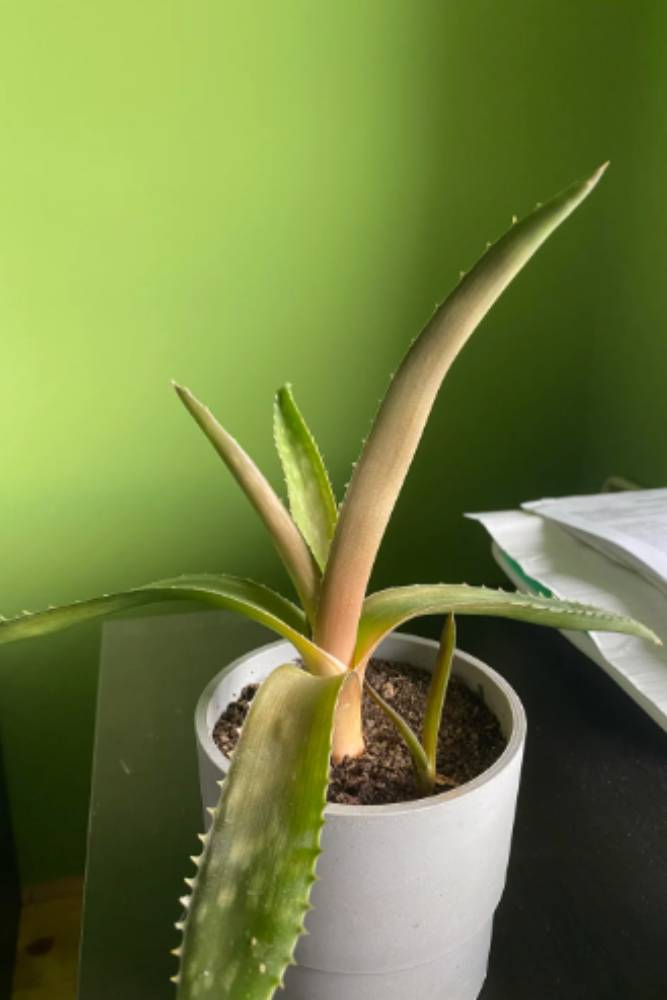
Aloe vera plants benefit from direct sunshine. It enables the plant to grow larger and more quickly. Because of this, the majority of gardeners consider moving the plant from indoors to outside.
Though Aloes thrive in direct sunlight, they require time to acclimate to changes in light intensity. Natural outdoor light is far brighter than interior lighting, and windows filter out the UV rays that Aloe’s red pigmentation is designed to block.
Don’t immediately place your aloe in the sun after removing it from an interior window. As soon as you bring the plant outside, place it in direct, bright light. Increase the intensity of the light you expose them to gradually. This also works the other way around. Allow a plant accustomed to full light a few weeks in bright shade before bringing it indoors to ease the transition.
Additionally, when you place the plant next to the windows, the window grilles can block the sun’s UV rays. Because they are intended to block UV rays from directly reaching the sun, indoor plants are less red than outdoor plants.
How do you acclimate?
- It’s best to move a plant gradually to ensure it gets enough sunshine indoors.
- Be patient. Prior to bringing the plant inside, leave it outside for an hour.
- Increase the timing gradually. The same applies if you decide to bring an outdoor plant within. You could also try another approach.
- Allow the plant to grow for a few weeks in a sunny, shady location before bringing it inside. It will assist the plant in making the move as smoothly as possible.
Poor Drainage and Improper Irrigation Practices
There is no such thing as too much water. The soil may become unable to drain properly as a result of over-watering, and the leaves color will change quickly. This sort of discoloration cannot be reversed in contrast to light-induced discoloration. So, it’s important to remember that overwatering might permanently harm your aloe vera plant. Always be cautious when watering in response to leaves turning red or brown when exposed to sunshine.
An aloe plant needs water every two to four weeks during the growing season. Only water the plant when the soil is more than three-quarters dry. Check the moisture level of the soil in the container. The leaf test is a great method for determining whether an aloe plant needs water. Look to see if the leaf edges are beginning to wrinkle. Taut leaves are signs of expanded cell membranes due to appropriate water content.
How can an overwatered aloe vera plant be saved?
- Wait a few days before continuing to irrigate the soil.
- Before watering, the soil must be allowed to dry completely.
- Always assess the soil’s moisture content, and only provide water to the plant when the top 2-3 inches of soil are dry.
- The Aloe vera plant should be watered once every two to three weeks if you must stick to a schedule. The schedule may change based on the season, so you should still check the moisture level every week.
- Make sure the pot has drainage holes if you’re using one. Otherwise, you’ll need to drill one out. Watering should be less frequent, during the winter.
The soil takes some time to dry since the rate of evaporation is slow. Additionally, water them less when the temperature climbs above 80 to 90°F (summer dormancy).
Too Heavy Soil
Aloe plants require a specific type of soil that is exceptionally well-draining, light, pH-neutral, or slightly alkaline. Because its native soil is permeable, the roots of an aloe quickly absorb water into its succulent leaves. Keeping the roots properly dry in a deep, moisture-retaining mix is difficult, which frequently results in waterlogged soil.
A retail cactus mix base is a good choice. Add regular potting soil, compost, or organic substances to improve the soil’s absorption capacity and give it some nutrition. However, don’t compromise its capacity to drain fast. A richer potting media should be used in a 50/50 ratio with cactus soil. If it drains too slowly or retains too much moisture, add coarse sand, perlite, or other aerating ingredients to the mixture.
The following recipes will help you to improve your aloe soil.
- Recipe 01
- 3 parts potting soil, 2 parts pumice & 1 part peat
- Recipe 02
- Equal parts of Potting soil, Coarse sand & Peat moss
Poor Fertilization
Since its root structure is designed to absorb moisture quickly, aloes only need little feeding and can easily overdose on a heavy fertilizer treatment. Your aloe plant may become red if it has been overfed. Even though organic fertilizers are gentler than synthetic fertilizers, they must be used with caution.
The liquid is safer and easier to use to treat nutrient deficiencies than the dry, granular alternatives. Use a phosphorus-rich blend because treating phosphorus deficiencies is the most common need. Dilute by 50–25% and fertilize in the spring after feeding at the start of the growing season at six-week intervals until late summer.
Best Practice: To prevent fertilizer shock, soak and drain the soil for around 12 hours before feeding your aloe. A small layer of wetness is maintained on the roots, acting as a barrier against a sudden burst of liquid fertilizer.
How can proper fertilization be maintained?
- Remove the extra minerals from the soil if your plant is in a pot by flushing it. Fill the planter with 5 times its volume of water.
- This technique must be performed on perfectly dry soil.
- Aloe Vera plants should be fertilized in the spring and summer when they are growing. The plant will vigorously consume and use the nutrients for growth and flowering.
- In the summer, avoid fertilizing when the temperature exceeds 80 to 90 °F.
- Excess fertilizer can burn the roots because they are in their resting stage. When the growing season begins, start feeding the plant.
- As a result, it will grow more quickly. Till the late summer, repeat this process every six months.
- But if the temperature rises too much, stop.
- Chemical fertilizers are harsher than organic ones.
- The former will cause less damage than the latter. Liquid fertilizers are ideal for aloe veras since they start working right away.
- Always dilute the fertilizer by reducing the strength to half the recommended amount. Never irrigate dry soil with fertilizer.
- Always wet the soil 12 hours prior to application to prevent root burn and promote quick absorption.
- Never apply fertilizer in the winter. They won’t be able to utilize the nutrients because they are growing slowly.
Temperature Swings and Cold Stress

An aloe plant may turn red or purplish in cold weather. The anthocyanins that darken the leaves are thought to shield the plant from extremely high or low temperatures. Even if your plant experiences a little chill, you might notice a change in color.
The majority of aloes favor temperatures between 55°F (13°C) to 80°F (27°C). Some kinds are more cold-tolerant than others, but expect some color change if temperatures go below 50°F (10°C). If your plant begins to turn red in cool autumn weather, it’s time to bring it indoors.
During the cool season, if you notice red tinting on leaves near a window, it may be because the area is too cold for them. Temperatures might be quite cold adjacent to a frosted window, even in a warm environment. A color change can also be caused by cold or hot drafts. A continuous wind current is unhealthy, although air circulation aids in the removal of extra moisture.
How can you keep them warm?
If you leave your plant outside, the leaves will turn red in the second half of the cool fall season. You need to get them inside right now. Your plant is taking in the cold from outside if it develops red tints indoors and is close to a window. Close the windows and move them into a warm area. The same effects will be produced in a cold room as well.
Keep the plant away from fans and air-conditioned spaces. Before putting something anywhere, make sure it’s comfortable there. Place them close to a window with a south or west view. Most heat is generated in these directions, but it is not as strong as in summer. The plant will be kept warm.
Do not water. Check the moisture level often and only give them water if the top 2-3 inches are dry. If your area experiences frigid temperatures below 50°F and you want to plant Aloe Vera outside, grow it in pots. When the weather cools down in the fall, it will be easier to bring them inside. They turn red when the temperature changes. Avoid placing the aloes next to frequently opened or closed doors or windows.
Excess Salts
The presence of salts in the soil frequently causes discoloration. It is both natural and important for the soil to contain minerals.
However, an excessive amount of salts, frequently brought on by overfertilization, can change the chemical makeup of the soil. An accumulation eventually causes a chemical coloring and burns the delicate roots.
Regular flushing is a simple way to stop this. Toxins must be flushed from the aloe plant, leaving the soil free of chemicals that may damage the plant’s natural color.
Transplantation Shock
When growing aloe vera, it might have been placed in a small pot. It has to be moved into a larger pot now that it is growing larger. If you do not move the plant to a larger place, its growth will be inhibited. The plant won’t be able to expand since it won’t be able to gather adequate resources from its existing surroundings.
Changing the plant pot while growing can cause transplanting shock, which causes the leaves to turn red as the plant adjusts to the new environment. Always use a pot that is 1-2 inches larger in diameter than the one you are currently using. Never choose a deep pot; instead, choose a wider one. If you have a tendency to overwater, use clay containers.
It can quickly wick moisture away. Consider using quick-draining soil, as advised previously in the text. Avoid placing newly transplanted Aloe Veras in the sun for the first two weeks after repotting. Allow it some time to acclimate to the new surroundings. Also, wait a few days before watering them. Don’t fertilize for at least one or two months.
They will already receive enough nutrients from the growing medium because they were repotted with new soil. Your plant may not experience shock if you take the above actions. However, it is dependent upon how well you performed the repotting and whether the plant can withstand the transplant.
Waterlogged Aloe
Now for a few of the undesirable causes of your Aloe turning red and other colors other than green. Simply put, it’s possible that you’re overwatering your Aloe, which is never a smart idea. The majority of succulent species, especially aloe vera plants, suffer from rot, mushy leaves, and other general health issues as a result of this.
This could also be the reason your Aloe Vera turned red, which is neither natural nor healthy, and you should reconsider your watering habits. So that your Aloe doesn’t become flooded with water, you should only water when the soil is almost completely dry.
If you’re not overwatering, it could be as simple as utilizing poor soil instead of permeable soil, if you get my meaning. You may need to inspect the soil you’re using and ensure that it’s high-quality cactus soil with components like perlite to give super-fast drainage so water doesn’t sit for long.
Your aloe vera will have a chance to switch back to the regular green shade rather than the unhealthful red shade once both items are in order. This assumes that there is no rot yet or that if there is, it is effectively addressed.
Natural Redness
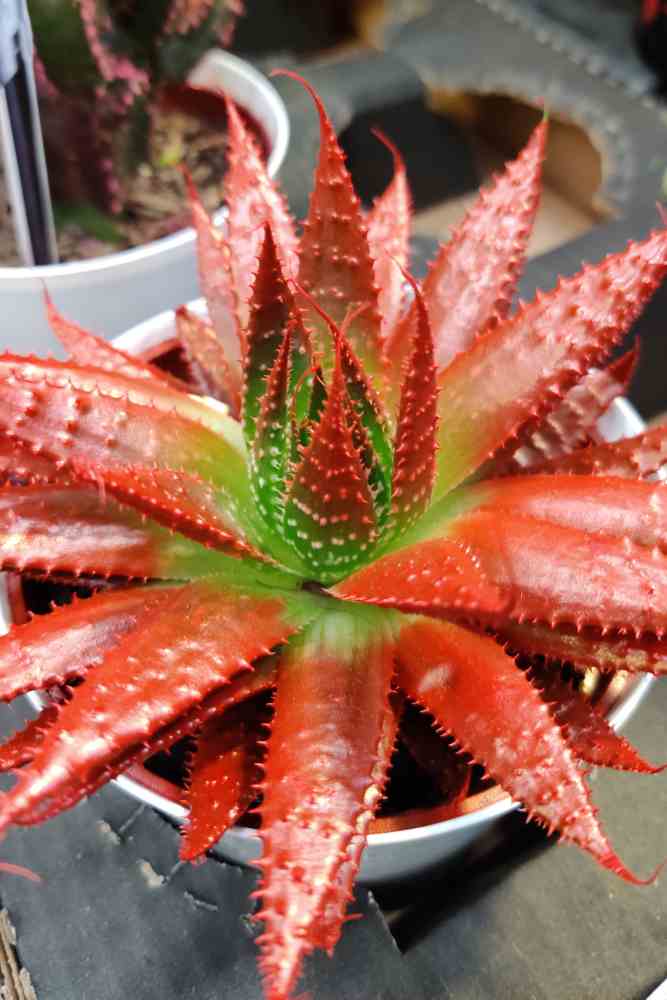
A number of Aloe species, including the beautiful aloe cameronii, have naturally crimson leaves. This remarkable Aloe species, which is native to Zimbabwe and Malawi, have naturally red foliage; however, the exact shade changes according to the time of year and the light.
The leaves will be primarily green in the winter with red edges and tips, but in the summer, with ideal lighting, the entire plant will practically change to a lovely red shade. Because it loves more strong sunlight than other aloe species, give Aloe cameronii lots of direct sunlight to produce the best display of red leaves.
In most circumstances, an Aloe vera becoming red indicates that your succulent is getting adequate sunshine and responding properly. Aloe plants will become a stunning red hue when given appropriate amounts of sunshine for a long length of time, especially during the hot summer months, so think of it as a sun tan rather than a sunburn.
Because of their red color, these succulents can survive even in the hottest climates on Earth by shielding themselves from the sun’s damaging rays. It’s only natural. Your aloe vera is not in any danger; it is only responding to the weather, so there is no reason to be worried in this case.
Having said that, if you just want to restore the leaves to their normal green hue, you may either lessen the intensity of the sunlight or gradually acclimatize the Aloe to growing indoors. Just wait a little before making the adjustment to give your aloe time to adjust.
Frequently Asked Questions
Can you put red aloe vera on your face?
In fact, you may have already applied Aloe to a sunburn, a little cut, or a minor abrasion in the past. You might be unsure if it is safe to apply on your face despite its therapeutic properties. In general, the response is yes.
Should I cut off red aloe vera leaves?
A plant of aloe vera doesn’t require trimming. Cut off the plant’s old outer leaves to keep it in shape and prevent it from becoming too huge or spreading out too much. Also, always remove any diseased or damaged leaves.
What color is a healthy aloe vera plant?
The leaves of your Aloe should be plump, robust, and straight, with a consistent green color. A plant is unhappy if its leaves are drooping, withered, or have brown or dead spots. But, in most cases, you can resolve the issue and return your Aloe to health. A plant is unhappy if its leaves are drooping, withered, or have brown or dead spots. The most common problem with aloes is overwatering.
Can Red Aloe Turn Green Again?
The Aloe genus has hundreds of species, each with a unique shape and size. Aloe Vera is a succulent that thrives in hot, dry conditions. Many aloe leaves turn red as a protection mechanism against too much sunshine. Although some owners mistake this process for a sunburn, the Aloe becoming red actually serves as a suntan to shield the leaves from excessive sun exposure.
When Aloe is unhappy, its leaves may change color, which can alert you to the plant’s state. Aloe vera can develop red tips or a brownish color as a result of environmental stress or changes in the plant’s surroundings. You might wonder if Aloe Vera plants grow back. Understanding what is natural and what isn’t is essential for a healthy plant, as is understanding how a stressed plant can swiftly revert to its natural color.
- 29 Bucket Gardening Ideas for a Lush, Compact Garden - October 30, 2024
- 20+ Chic Boho Bedroom Ideas for a Cozy and Stylish Retreat - June 20, 2024
- 12+ Modern Boho Living Room Ideas to Create a Unique Oasis - June 10, 2024

